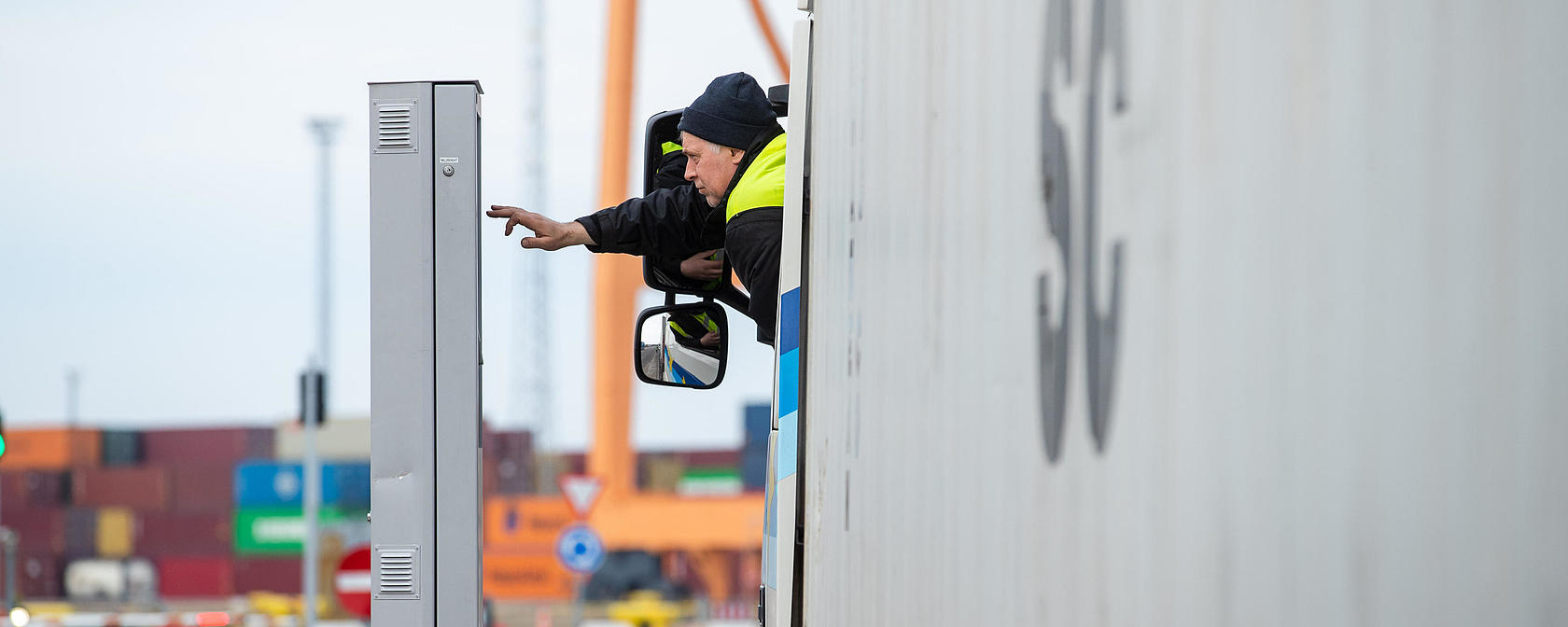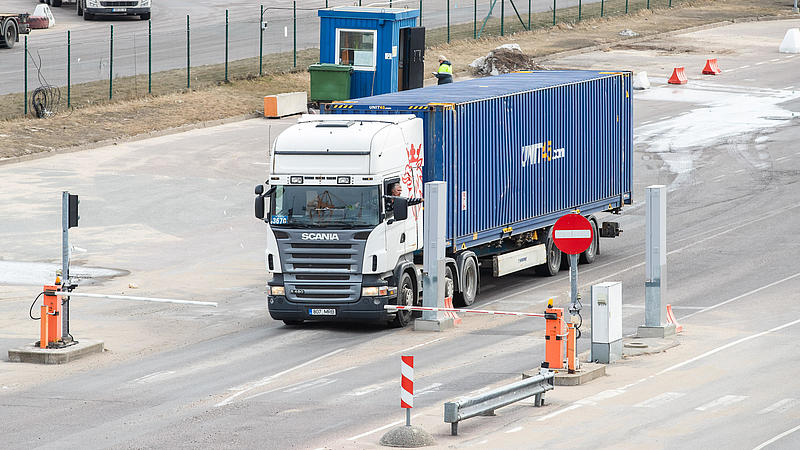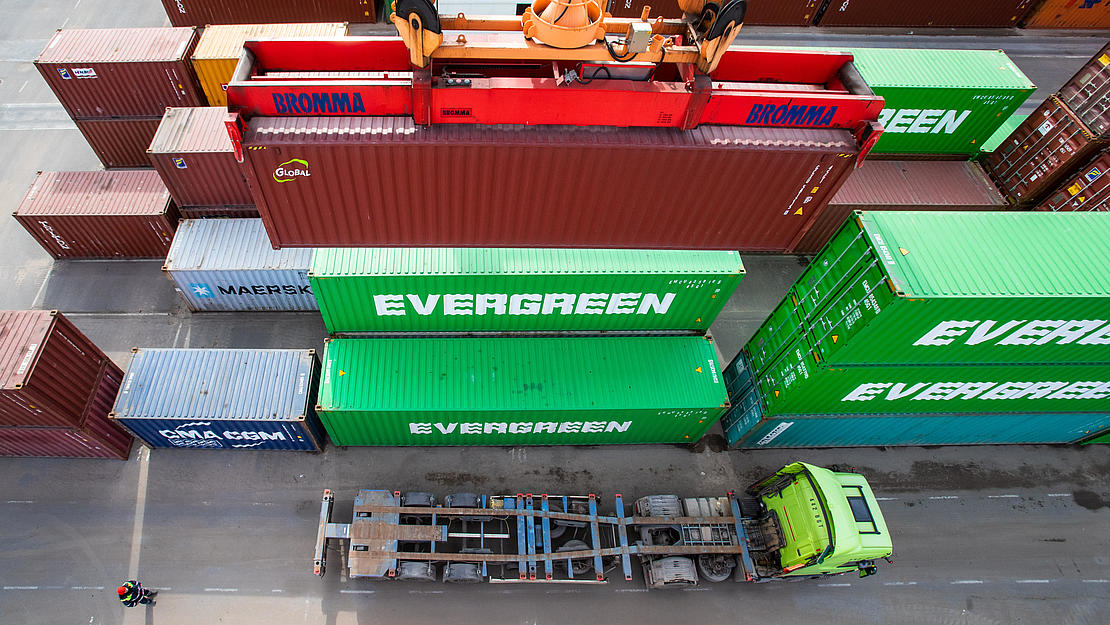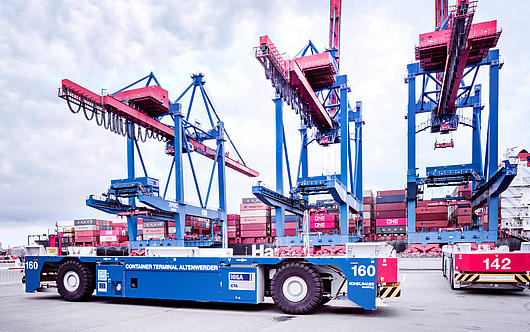
Tanel Väälma knows the Port of Muuga very well. He is working as a driver for Miil, one of the biggest container transport companies in Estonia. Container drop-off and pickup, for years now. “Every time the same procedure”, tells Väälma. “Getting to the gate, stepping out and walking around the truck with the tally clerk. No matter the weather. Autumn wind- and rainstorms or freezing winter conditions at the Gulf of Finland.”
That was his work, prior December 2021. “You pull on your jacket, dig deep under the hood out there and stroll around with the tally, brrr. Now – I don't even need to exit the cabin of my truck upon entry. Just reach the hand out from the window, press the screen, get the paper printed and voilá, that's it.”
Each registered truck is identified by the number plate and the barrier opens automatically for it. Once inside the terminal area, the turntime can be shortened to as little as 10-15 minutes.
The journey getting to the point, which Väälma just described, started in February 2021. “We are constantly looking for ways to automate our processes and therefore increase the service quality we offer to our customers,” explains Julia Metslov, the young and enthusiastic Head of Customer Service at HHLA TK Estonia. “Analysing our processes, we figured that automatization of the entry to and exit from container terminal would be very helpful in shortening the truck transit time and thus increasing the efficiency of entire logistics value chain.”
How does HHLA TK Estonia's automated gate system work?
- All trucks entering the HHLA TK Estonia' terminal will at first drive through an OCR (Optical Character Recognition) gate for container registration.
- After OCR-gate trucks arrive at a terminal gate's first self-service kiosk which directs to the line for digital entry or to a parking place for manual handling if necessary
- In the digital entry line the infokiosk shows from a display all relevant information regarding the terminal visit. The truck is checked in at the gate automatically and directed to designated loading place. Pressing a button on the screen, the information can be printed out on a receipt.
- When the lorry is checked in, a notification is automatically sent to the operator and the service process can start.
- Upon departing, the trucks again pass through OCR-gate for container registration, after which the truck is directed to exit the terminal.

The first steps were internal discussions in the core team of seven specialists, recalls project manager Metslov. “So we were there with an idea of a solution, what we want to implement and which would be effective. Then our IT-partner came in,” she recalls. “With IT-specialists, we already went into details, what is needed to implement our vision.”

Cameras, scanners, gates
Truck driver Väälma remembers times when he could wait for half an hour, before his turn came to enter the terminal and offload his container. “Now, the admission to the terminal works so swiftly that the crane operators are starting to have trouble in catching up with us,” he says with a soft smile. For that, many months of various preparatory works were required. Including talking to transportation companies such as Väälma’s employer Miil and others.
“We were aiming to make lives easier for our clients,” explains Julia Metslov, “to ensure that their expectations and needs.” Previously, HHLA TK Estonia was manually conducting controls of the containers passing through the gate. That took too much time, which in turn created lines at the gates. The same procedure was required for each truck at the exit. Metslov’s team became convinced that automation should be the solution.
The summer of 2021 was used to get an overview of all equipment and additional works needed. Cameras, scanners, kiosks with info screens, roadworks... Then, in August, the most crucial part of the project began: a two month system development by the IT-partner Cone Center together with HHLA TK Estonia's IT-department. “In parallel, we installed the equipment and made necessary construction works at the entry and exit gates of the terminal”, Metslov looks back.
End of October the Terminal stood before the crucial moment – new automated gate system went into a test phase. All went surprinsingly smoothly and by early December, the new system was officially introduced. And not only Tanel Väälma’s expectations were met. “It's faster and smoother than before and there are no queues at entrance and exit. The software is user friendly and flexible; it is very comfortable receiving printouts of processing locations”, Metslov shares feedback from the customers.
And that's what it's all about - smooth process that brings with it the satisfaction of clients. As a side effect, it also stabilises logistical processes with regard to challenges such as the Corona pandemic, because automation reduces the number of direct human contacts required for completing a process.
Given, the drivers still need to exit the truck for instructing the crane operators at dropoff and pickup locations. But the challenge of automation is a never ending one.



